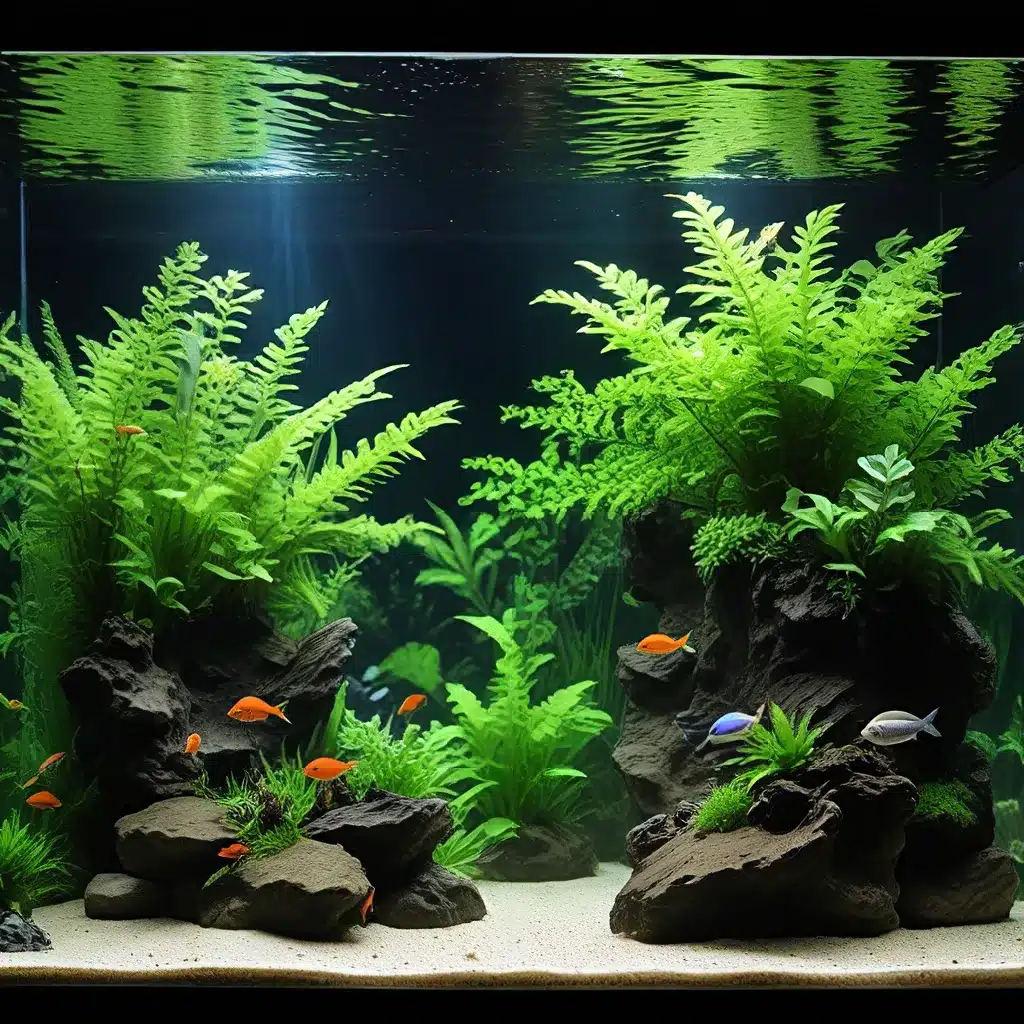
Understanding the Importance of Aquarium Lighting
Aquarium lighting is a critical aspect of creating a thriving and vibrant underwater environment for your aquatic inhabitants. The right lighting setup can make all the difference in the health and growth of your fish, plants, and even invertebrates. Whether you’re setting up a freshwater, saltwater, or planted tank, the choice of lighting can make or break the success of your aquarium.
The Benefits of Proper Aquarium Lighting
Aquarium lighting plays a vital role in supporting the natural processes of your aquatic ecosystem. Appropriate lighting:
- Enables Photosynthesis: For planted aquariums, the right light spectrum and intensity are essential for plants to undergo photosynthesis, which is the foundation of a thriving underwater garden.
- Enhances Fish Behavior: The lighting conditions in your tank can influence the natural behaviors of your fish, such as feeding, breeding, and coloration.
- Promotes Coral and Invertebrate Growth: In saltwater and reef tanks, specialized lighting is necessary to support the specific requirements of corals and other invertebrates.
- Creates Aesthetic Appeal: Thoughtfully designed lighting can transform your aquarium into a mesmerizing, visually stunning centerpiece in your home or office.
Choosing the Right Aquarium Lighting
Selecting the appropriate lighting for your aquarium can be a complex task, as there are numerous options and considerations to take into account. Let’s explore the key factors to keep in mind when choosing the perfect lighting setup for your aquarium.
Lighting Types and Technologies
The most common types of aquarium lighting include:
LED Lights:
LED strip lights have gained immense popularity in the aquarium hobby due to their energy efficiency, customizability, and low heat output. They are available in a variety of color temperatures and intensity levels, making them a versatile choice for both freshwater and saltwater tanks.
T5 Fluorescent Lights:
Fluorescent lighting, particularly T5 models, has been a reliable option for aquarium illumination. These lights provide a broad spectrum of light suitable for a wide range of aquatic plants and fish.
Metal Halide Lights:
Metal halide lamps are known for their high-intensity output, making them a preferred choice for deep aquariums and advanced reef setups. However, they tend to produce more heat and have a higher energy consumption compared to other lighting options.
Hybrid Lighting Systems:
Some aquarists opt for a combination of lighting technologies, such as pairing LED lights with T5 fluorescent or metal halide fixtures. This hybrid approach allows for greater control and flexibility in tailoring the lighting to the specific needs of the aquarium inhabitants.
Lighting Spectrum and Color Temperature
The color temperature of your aquarium lighting, measured in Kelvin (K), plays a critical role in the overall appearance and health of your aquatic ecosystem.
Cool White (6500K): This color temperature is often recommended for freshwater tanks, as it closely mimics natural daylight and supports the growth of aquatic plants.
Warm White (3000K): Warmer color temperatures create a more natural, inviting ambiance, which can be beneficial for certain fish species and planted aquariums.
Full Spectrum (5000-10,000K): Full-spectrum lighting closely replicates the full range of natural sunlight, making it an excellent choice for both freshwater and saltwater tanks, particularly those with a diverse array of plants and corals.
Customizable Lighting (RGB): LED lights with adjustable RGB (red, green, blue) capabilities allow you to create unique lighting effects and fine-tune the color spectrum to suit your specific aquarium setup.
Lighting Intensity and Duration
The intensity and duration of your aquarium lighting are crucial factors in maintaining a balanced and healthy environment. Striking the right balance is essential to prevent issues such as algae growth or stress on your aquatic inhabitants.
For freshwater tanks, aim for a lighting duration of 10-12 hours per day, with an intensity that supports the needs of your plants and fish. In saltwater and reef tanks, the lighting duration may need to be adjusted based on the requirements of your corals and other invertebrates, often ranging from 12 to 14 hours per day.
Designing an Effective Lighting Setup
When setting up the lighting for your aquarium, consider the following factors to create an optimal and harmonious environment:
Tank Dimensions: Ensure that the lighting fixtures you choose are appropriately sized to provide even coverage across the entire tank surface.
Aquarium Inhabitants: Research the specific lighting requirements of the fish, plants, and invertebrates you plan to keep, and tailor your setup accordingly.
Aquascaping Layout: Position your lighting fixtures in a way that complements the aquascape, avoiding shadows or hot spots that could disrupt the overall aesthetic.
Lighting Schedules: Utilize timers or programmable controllers to simulate natural light cycles, mimicking the gradual transition from dawn to dusk.
Ventilation and Heat Management: Proper ventilation and cooling mechanisms are essential, especially for high-intensity lighting setups, to maintain stable water temperatures and prevent overheating.
Troubleshooting and Maintenance
Even with a well-designed lighting system, you may encounter occasional challenges. Here are some tips for troubleshooting and maintaining your aquarium lighting:
Algae Growth: Monitor for excessive algae growth, which may indicate a need to adjust the lighting intensity or duration.
Changing Bulbs and Fixtures: Replace aging bulbs or fixtures regularly to ensure consistent light output and spectrum.
Cleaning and Maintenance: Regularly clean the lighting fixtures and reflectors to maintain optimal light transmission and efficiency.
Monitoring Water Parameters: Keep a close eye on water temperature, pH, and other parameters that can be affected by lighting changes.
By understanding the importance of aquarium lighting and following these best practices, you’ll be well on your way to creating a thriving and visually stunning underwater ecosystem in your home or office. Embrace the power of light and let your aquarium shine!

